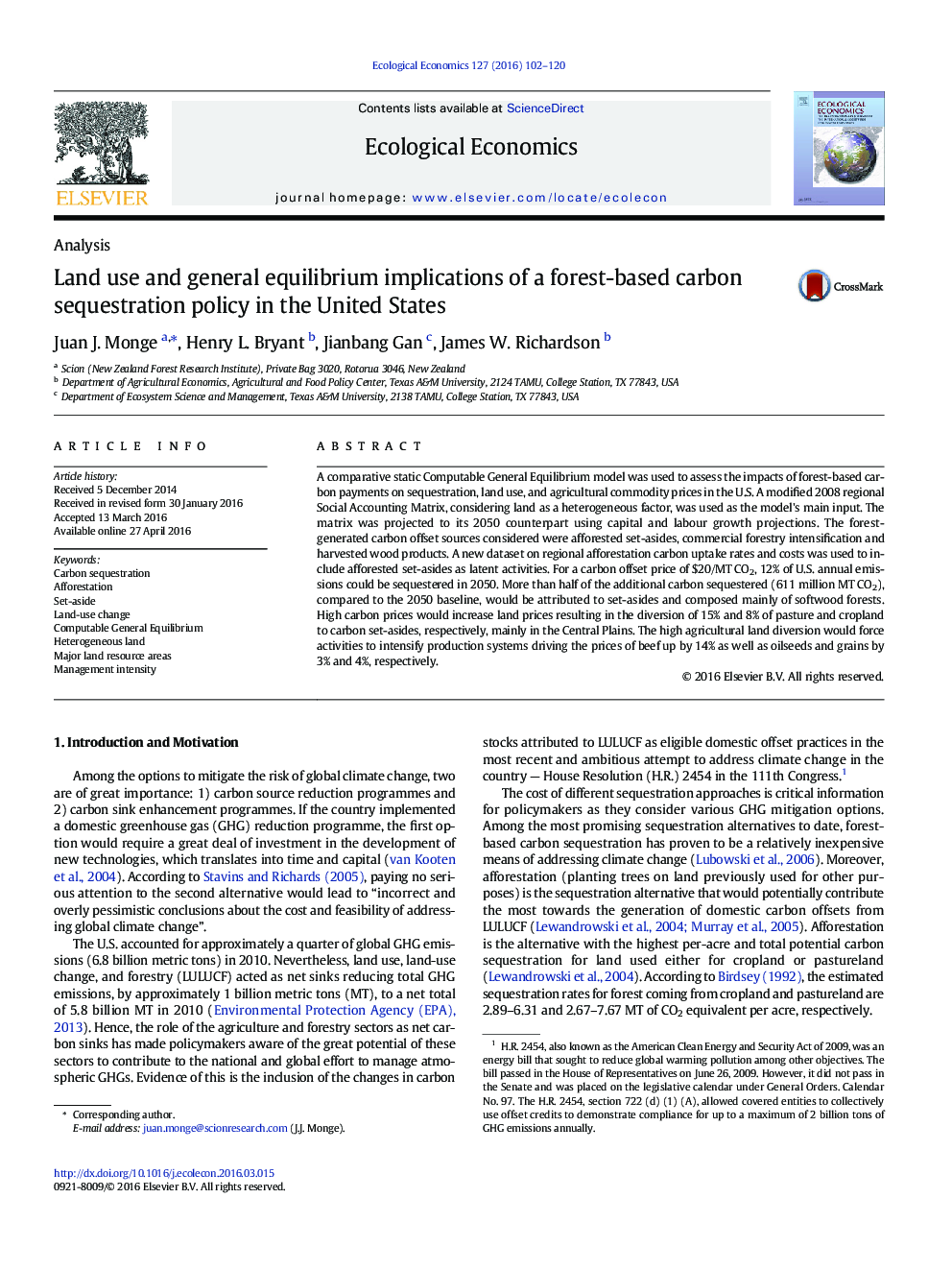| Article ID | Journal | Published Year | Pages | File Type |
|---|---|---|---|---|
| 5049114 | Ecological Economics | 2016 | 19 Pages |
•An equilibrium model was used to assess economic impacts of forest carbon payments.•Offset sources considered were set-asides, intensification and wood products.•A new dataset on regional afforestation carbon uptake rates and costs was used.•12% of U.S. annual emissions could be sequestered in 2050 for $20 MT CO2.•High agricultural land diversion would force activities to intensify systems.
A comparative static Computable General Equilibrium model was used to assess the impacts of forest-based carbon payments on sequestration, land use, and agricultural commodity prices in the U.S. A modified 2008 regional Social Accounting Matrix, considering land as a heterogeneous factor, was used as the model's main input. The matrix was projected to its 2050 counterpart using capital and labour growth projections. The forest-generated carbon offset sources considered were afforested set-asides, commercial forestry intensification and harvested wood products. A new dataset on regional afforestation carbon uptake rates and costs was used to include afforested set-asides as latent activities. For a carbon offset price of $20/MT CO2, 12% of U.S. annual emissions could be sequestered in 2050. More than half of the additional carbon sequestered (611 million MT CO2), compared to the 2050 baseline, would be attributed to set-asides and composed mainly of softwood forests. High carbon prices would increase land prices resulting in the diversion of 15% and 8% of pasture and cropland to carbon set-asides, respectively, mainly in the Central Plains. The high agricultural land diversion would force activities to intensify production systems driving the prices of beef up by 14% as well as oilseeds and grains by 3% and 4%, respectively.
